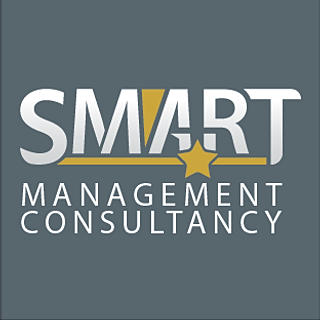Effective Risk Management Strategies for Your Business
- Smart Management Consultancy
- Aug 18
- 4 min read
In today’s fast-paced and unpredictable market, managing risks effectively is crucial for any business aiming to thrive. Risks can come from various sources such as financial uncertainties, operational failures, legal liabilities, or external threats like natural disasters. Without a solid risk management plan, businesses may face severe consequences that could jeopardize their survival. This article explores practical and effective business risk management strategies that can help you identify, assess, and mitigate risks to protect your company’s assets and reputation.
Understanding Business Risk Management Strategies
Business risk management strategies involve a systematic approach to identifying potential risks, evaluating their impact, and implementing measures to control or minimize them. These strategies are essential for maintaining business continuity and achieving long-term success.
Key Steps in Developing Risk Management Strategies
Risk Identification
Begin by listing all possible risks that could affect your business. This includes internal risks like employee errors or equipment failure, and external risks such as market fluctuations or regulatory changes.
Risk Assessment
Evaluate the likelihood and potential impact of each risk. This helps prioritize which risks need immediate attention and which can be monitored over time.
Risk Mitigation
Develop plans to reduce the probability or impact of risks. This could involve diversifying suppliers, investing in cybersecurity, or purchasing insurance.
Risk Monitoring and Review
Continuously monitor risks and the effectiveness of your mitigation strategies. Update your risk management plan regularly to adapt to new challenges.
Practical Examples of Risk Management Strategies
Financial Risk: Implement strict budgeting controls and maintain a cash reserve to handle unexpected expenses.
Operational Risk: Use quality control processes and regular maintenance schedules to prevent equipment breakdowns.
Compliance Risk: Stay updated with industry regulations and conduct regular audits to ensure compliance.
Reputational Risk: Manage customer feedback proactively and maintain transparent communication channels.

Essential Business Risk Management Strategies to Implement
To build a resilient business, consider integrating the following strategies into your risk management framework:
1. Diversification
Avoid relying on a single product, supplier, or market. Diversification spreads risk and reduces the impact if one area faces difficulties.
2. Strong Internal Controls
Establish clear policies and procedures to prevent fraud, errors, and inefficiencies. Regular training and audits help maintain these controls.
3. Technology and Cybersecurity
Invest in up-to-date technology and cybersecurity measures to protect sensitive data and ensure smooth operations.
4. Insurance Coverage
Purchase appropriate insurance policies to cover potential losses from property damage, liability claims, or business interruptions.
5. Crisis Management Planning
Prepare for emergencies with a detailed crisis management plan. This should include communication protocols, evacuation procedures, and recovery steps.
6. Employee Training and Awareness
Educate employees about risk factors and their role in managing risks. A well-informed team can identify and respond to risks more effectively.
7. Use of Professional Risk Management Services
Sometimes, it’s beneficial to seek expert help. Utilizing risk management services can provide specialized knowledge and tools to enhance your risk management efforts.

What are the Four Types of Risk Management?
Understanding the different types of risk management helps tailor your strategies to specific challenges your business may face. The four main types are:
1. Strategic Risk Management
Focuses on risks that affect the overall direction and goals of the business. Examples include market competition, changes in consumer preferences, or mergers and acquisitions.
2. Operational Risk Management
Deals with risks arising from internal processes, people, and systems. This includes equipment failures, supply chain disruptions, or human errors.
3. Financial Risk Management
Involves managing risks related to financial transactions, investments, and market fluctuations. Currency exchange rates, credit risks, and liquidity issues fall under this category.
4. Compliance and Legal Risk Management
Ensures the business adheres to laws, regulations, and ethical standards. Non-compliance can lead to fines, legal action, and reputational damage.
By categorizing risks, businesses can allocate resources more effectively and develop targeted mitigation plans.

Tools and Techniques for Effective Risk Management
Implementing the right tools and techniques can significantly improve your risk management process. Here are some widely used methods:
Risk Matrix
A visual tool that plots risks based on their likelihood and impact. It helps prioritize risks and decide on mitigation actions.
SWOT Analysis
Identifies Strengths, Weaknesses, Opportunities, and Threats related to your business. This analysis provides a comprehensive view of internal and external risks.
Scenario Analysis
Involves creating hypothetical situations to assess how different risks could affect your business. This prepares you for various possible outcomes.
Risk Register
A detailed document that records all identified risks, their assessments, mitigation plans, and monitoring status. It serves as a central reference for risk management activities.
Regular Audits and Reviews
Conducting periodic audits ensures that risk management strategies are effective and up to date.
Building a Risk-Aware Culture in Your Business
A successful risk management strategy depends not only on processes but also on the mindset of your team. Cultivating a risk-aware culture encourages proactive identification and management of risks.
Steps to Foster a Risk-Aware Culture
Leadership Commitment: Leaders should demonstrate the importance of risk management through their actions and communication.
Open Communication: Encourage employees to report risks or concerns without fear of blame.
Continuous Training: Provide ongoing education about risk management principles and practices.
Recognition and Rewards: Acknowledge employees who contribute to effective risk management.
When everyone in the organization understands their role in managing risks, the business becomes more resilient and adaptable.
Moving Forward with Confidence
Effective business risk management strategies are essential for navigating uncertainties and safeguarding your company’s future. By identifying risks early, assessing their impact, and implementing practical mitigation measures, you can reduce vulnerabilities and seize opportunities with confidence.
Remember, risk management is an ongoing process that requires regular attention and adjustment. Leveraging professional risk management services can provide valuable support and expertise to strengthen your approach.
Start today by reviewing your current risk management practices and identifying areas for improvement. With the right strategies in place, your business will be better equipped to face challenges and achieve sustainable growth.
Contact Smart Management Consultancy now.
WhatsApp +97336077750
Email info@smartmcbh.com















Comments